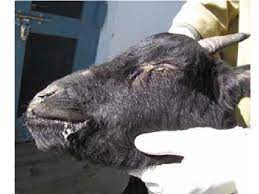Peste Des Petits Ruminants : Contagious Animal Disease

An outbreak of a highly contagious animal disease, Peste Des Petits Ruminants, has recently killed 60 sheep and goats and affected around 200 in the highland pastures of the Lahaul and Spiti district of Himachal Pradesh
- Peste Des Petits Ruminants (PPR) is a highly contagious viral disease of sheep and goats with high mortality.
- It is caused by a virus of the family paramyxoviridae and genus morbillivirus. It is closely related to other members of the genus, including the rinderpest virus, measles virus, and canine distemper virus.
- PPRV causes disease with an array of clinical signs. It also causes immunosuppression, which makes affected animals more likely to pick up other infections.
- Clinical signs of PPR: Fever, Eye and nasal discharges, Sores in the mouth, Diarrhoea, Listlessness, Respiratory signs (coughing and pneumonia), Abortion and death, with case fatality rates as high as 90% (though more commonly around 20%).
- PPR is mainly spread during close contact when a susceptible animal inhales the virus from infected animals’ coughing and sneezing.
- Transmission can also occur indirectly through contact with infected objects (fomites) such as feed troughs, bedding etc.
- Sources of PPRV include secretions from the eyes, nose, and mouth of infected animals, as well as their faeces.
- Once introduced, the virus can infect up to 90 percent of an animal herd, and the disease kills anywhere from 30 to 70 percent of infected animals.
- The PPR virus does not infect humans.
- In India, the disease outbreaks have been reported in Himachal Pradesh, Andhra Pradesh, West Bengal, Telangana, Karnataka and Chhattisgarh.




